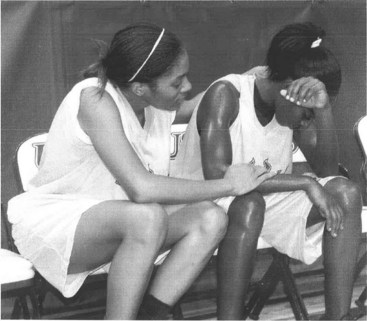Chapter 8 After completing this chapter, the student will be able to perform the following: 2 Identify qualified sport psychologists. 3 Explain how massage supports the sport psychologist. 4 List ways in which massage supports the zone experiences—mental toughness, ideal performance state, and peak performance. 5 Explain the importance of sport psychology during injury rehabilitation. 6 Identify the signs of mental and emotional strain requiring referral to the medical team or sport psychologist. 7 List the five stages of response to injury. 8 Define stress and explain stress coping strategies. 9 List factors that interfere with restorative sleep. Muscles may be held in sustained tension owing to overuse, poor posture, and/or psychological or emotional stress. States of anxiety and anger, for example, can create sustained muscular hypertonicity. Emotional stress, such as depression, can also cause decreased muscular tone and loss of sensory motor communication (Figure 8-1). 4. List ways in which massage supports the zone experiences—mental toughness, ideal performance state, and peak performance. Mental toughness is the ability to perform near the athlete’s best no matter what the competitive circumstance—to maintain calmness of thought, thinking positively, being realistic, and remaining focused. Ideal performance state is the level of physical and mental excitement that is ideal for performing at the top. Key elements include being confident, relaxed yet energized, positive, challenged, focused, and automatic. Peak performance describes one’s very best performance, although a person need not necessarily be in the zone while achieving it. Key elements include being focused, relaxed, confident, and energized. 5. Explain the importance of sport psychology during injury rehabilitation. 6. Identify the signs of mental and emotional strain requiring referral to the medical team or sport psychologist. Injury rehabilitation affects a person in many ways, including the following: • Change in status relative to peers • The need for discipline and compliance with rehabilitation programs • Decreased independence and control • Resultant worries about finances Signs that an athlete is having some problems include these:
Influences of the Mind and Body
Why Sport Psychology?
What is the Zone?
Injury and Sport Psychology
< div class='tao-gold-member'>
![]()
Stay updated, free articles. Join our Telegram channel

Full access? Get Clinical Tree


Influences of the Mind and Body
Only gold members can continue reading. Log In or Register to continue


